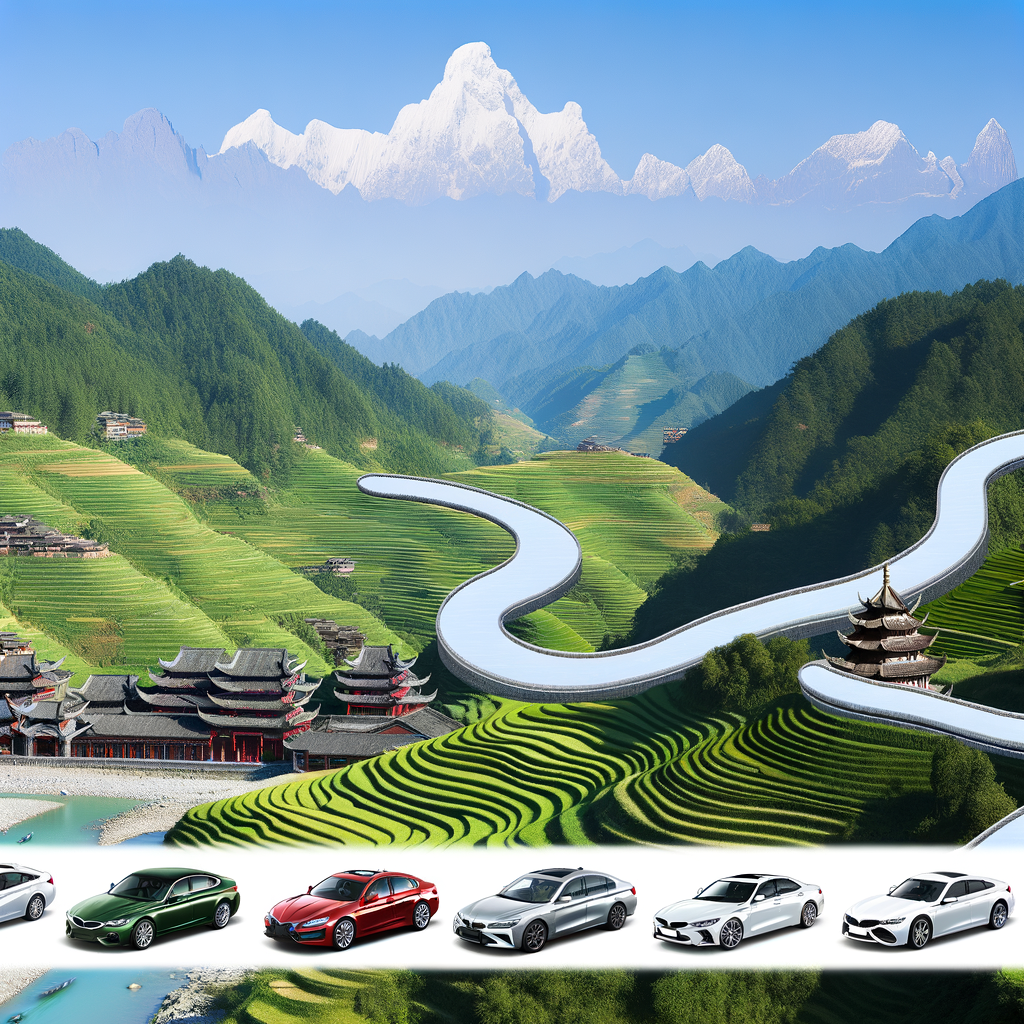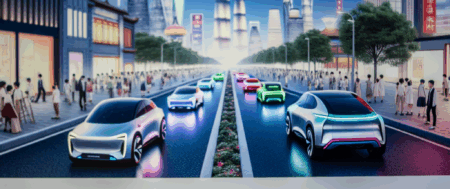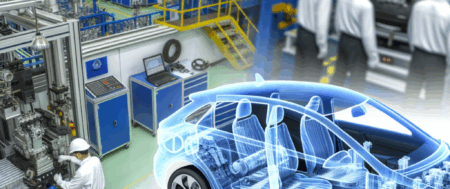Top foreign automakers are aggressively tapping into the largest automotive market, China, leveraging joint ventures with domestic car brands to navigate the complex regulatory landscape and meet the growing economy’s demand. Focused on electric vehicles (EVs) and new energy vehicles (NEVs) amid environmental concerns and government incentives, these companies are adapting to consumer preferences through technological advancements and strategic partnerships. This approach aims to address urbanization, market competition, and the expanding middle class’s mobility needs, reinforcing their position in China’s competitive automotive sector.
In the heart of the global automotive industry’s rapid evolution, China stands as the top contender, boasting the title of the Largest Automotive Market in the world. It’s a landscape where the dreams of Electric Vehicles (EVs) and New Energy Vehicles (NEVs) are becoming a vivid reality, fueled by a combination of government incentives, environmental concerns, and an insatiable appetite for innovation. As the Chinese economy continues its upward trajectory, bolstered by urbanization and an expanding middle class, the automotive market therein presents an intricate tapestry of opportunities and challenges for both domestic car brands and foreign automakers alike.
Navigating this dynamic terrain requires a keen understanding of the regulatory landscape, consumer preferences, and the strategic partnerships that form the backbone of success in this competitive arena. Joint ventures, in particular, have emerged as a strategic gateway for global brands aiming to tap into China’s vast consumer base, while aligning with local companies to steer through the complex regulatory environment. This synergy not only unlocks the market’s potential but also paves the way for technological advancements that are setting the pace for the future of the automotive industry.
The surge of EVs and NEVs, in particular, underscores China’s pivotal role in shaping the urban landscape of tomorrow, making it a hotbed for innovation and a green revolution in transportation. With the government’s hand firmly on the steering wheel through incentives and regulations, the drive towards eco-friendly vehicles is gaining momentum, marking a significant shift in consumer preferences and setting new benchmarks for environmental responsibility.
This article delves deep into the mechanics of the China automotive market, exploring how top foreign automakers are carving their niche, the impact of joint ventures, and the strategic maneuvers required to stay ahead in the game. From the bustling streets of China’s mega-cities to the corridors of power shaping policy, we examine the factors fueling the market’s growth, the technological advancements driving the industry forward, and the delicate balance between eco-consciousness and consumer desires. Join us as we embark on a journey through the gears of China’s automotive market, where the road ahead promises innovation, growth, and an ever-evolving landscape of opportunities.
1. “Navigating the Terrain: How Top Foreign Automakers are Winning in the World’s Largest Automotive Market”

In the race to dominate the world’s largest automotive market, top foreign automakers are deploying a variety of strategies to harness the immense potential of China’s growing economy and rapidly urbanizing population. With a burgeoning middle class eager for mobility solutions, these global giants are keenly aware that success in China is crucial for their global ambitions. The market’s appetite for electric vehicles (EVs) and new energy vehicles (NEVs) is particularly voracious, fueled by environmental concerns and robust government incentives aimed at reducing emissions.
Navigating the complex regulatory landscape of China requires a nuanced approach, and foreign automakers have found joint ventures with domestic car brands to be a strategic imperative. These alliances enable them to access extensive consumer bases while complying with local regulations, a critical factor given the government’s significant influence over the automotive sector. Joint ventures also facilitate a deeper understanding of consumer preferences, allowing foreign brands to tailor their offerings to meet the specific demands of Chinese drivers.
Technological advancements play a pivotal role in capturing the attention of the Chinese market. Foreign automakers are investing heavily in research and development to innovate in the realms of EVs and NEVs, recognizing that leadership in technology can translate to a competitive edge. The integration of cutting-edge features, from autonomous driving capabilities to advanced battery technologies, is a testament to the importance placed on meeting the sophisticated expectations of Chinese consumers.
Strategic partnerships extend beyond local manufacturing firms to encompass collaborations with technology companies, reflecting the industry’s shift towards smart, connected vehicles. These alliances are pivotal in staying ahead in a market where digital integration is increasingly becoming a hallmark of automotive excellence.
The competitive dynamics of China’s automotive market are influenced by a multitude of factors, including urbanization, environmental concerns, and market competition. Foreign automakers are constantly adapting their strategies to address these evolving challenges. From enhancing their product lines with a focus on EVs and NEVs to navigating the regulatory environment through joint ventures, their efforts are geared towards building a sustainable and profitable presence in China.
Success in the Chinese automotive market is not solely about bringing high-quality vehicles to the market; it’s about understanding and integrating into the fabric of China’s society—its burgeoning economy, environmental aspirations, and the mobility needs of its urbanizing population. Top foreign automakers recognize that their ability to win in this largest automotive market hinges on a delicate balance of leveraging global strengths and adapting to local nuances, a strategy that is as dynamic as the market itself.
In conclusion, the journey of foreign automakers in China’s vast automotive landscape is marked by strategic navigation through complex terrains of consumer preferences, regulatory landscapes, and intense market competition. As the largest automotive market globally, China presents an unparalleled opportunity for growth, driven by its rapidly growing economy, increasing urbanization, and the burgeoning demand for electric vehicles (EVs) and new energy vehicles (NEVs). The emphasis on EVs and NEVs, fueled by environmental concerns and substantial government incentives, underscores the market’s shift towards sustainable and innovative transportation solutions.
The success of top foreign automakers in this dynamic market hinges on their ability to form strategic partnerships through joint ventures with domestic car brands. These collaborations are crucial for navigating the regulatory complexities and tapping into the vast consumer base eager for both international quality and local relevance in their vehicles. Understanding and adapting to consumer preferences, leveraging technological advancements, and aligning with government incentives are key components of the strategy that has enabled foreign entities to thrive in this competitive environment.
Moreover, the role of government policies in shaping the market cannot be overstated. These policies guide the market towards prioritizing NEVs, influencing both production and sales trends. As the market continues to evolve, staying abreast of these changes and anticipating future shifts will be vital for all players within the industry.
In essence, the China automotive market, with its unique challenges and opportunities, requires a deep understanding of multiple facets—from regulatory hurdles and consumer behavior to strategic joint ventures and the embrace of new technologies. For foreign automakers, success in this lucrative but challenging market is not just about selling cars but about integrating into the fabric of China’s automotive future, marked by innovation, sustainability, and a deep understanding of the world’s largest automotive market.







